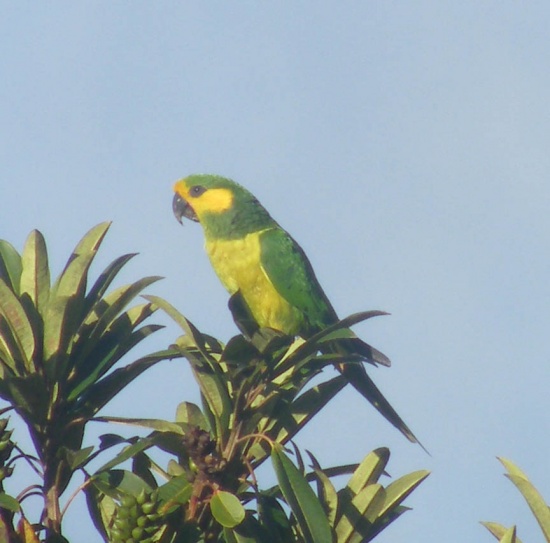(Attempt to disguise copied text. References updated) |
(→External Links: Another attempt to address GSearch issue) |
||
| (One intermediate revision by the same user not shown) | |||
| Line 35: | Line 35: | ||
{{ref}} | {{ref}} | ||
==External Links== | ==External Links== | ||
| − | {{GSearch|Ognorhynchus | + | {{GSearch|"Ognorhynchus icterotis" {{!}} "Yellow-eared Parrot" {{!}} "QAZWSX312" -"Zoothera Global"}} |
| + | {{GS-checked}}1 | ||
| + | <br /> | ||
| + | <br /> | ||
[[Category:Birds]] [[Category:Ognorhynchus]] | [[Category:Birds]] [[Category:Ognorhynchus]] | ||
Latest revision as of 23:58, 8 January 2024
- Ognorhynchus icterotis
Identification
42 cm (16½ in)
- Bright green upperparts
- Dark grey eye-ring
- Yellow face and ear-coverts
- Green throat
- Yellow underparts
- Black bill
Distribution
South America: Colombia. Was in the past also present in Ecuador, and unconfirmed reports claim it can still be seen there.
Taxonomy
Habitat
Cloud forests, elfin forest and other montane humid forest including disturbed areas, but closely associated to the wax palm Ceroxylon quindiuense an endangered species.
Status
Endangered. Logging, harvest of palm leaves, and planting of exotic trees all are threats to the future of this species which however have been improving its status the last 10 years.
Behaviour
Breeding
They nest in the trunks of the wax palm the clutch consists of 4 eggs. The adults are assisted by a brood helper who helps with feeding and caring for the young.
Diet
The diet consists mostly of the fruits of the wax palm.
Movements
One population seems resident while others wander around driven by search for suitable food
References
- Clements, J. F., T. S. Schulenberg, M. J. Iliff, D. Roberson, T. A. Fredericks, B. L. Sullivan, and C. L. Wood. 2015. The eBird/Clements checklist of birds of the world: v2015, with updates to August 2015. Downloaded from http://www.birds.cornell.edu/clementschecklist/download/
- Birdlife International
- Handbook of the Birds of the World Alive (retrieved September 2015)
- The Website of Everything
Recommended Citation
- BirdForum Opus contributors. (2024) Yellow-eared Parrot. In: BirdForum, the forum for wild birds and birding. Retrieved 9 November 2024 from https://www.birdforum.net/opus/Yellow-eared_Parrot
External Links
GSearch checked for 2020 platform.1




